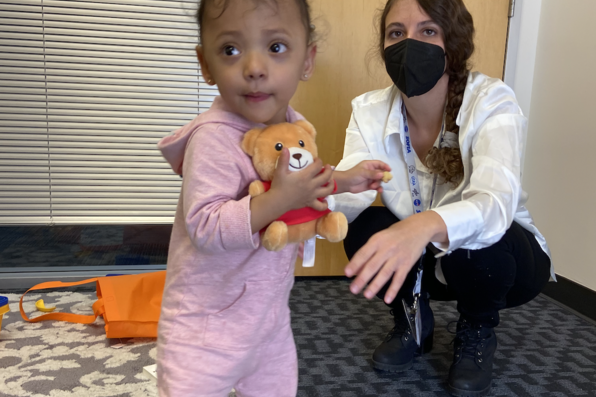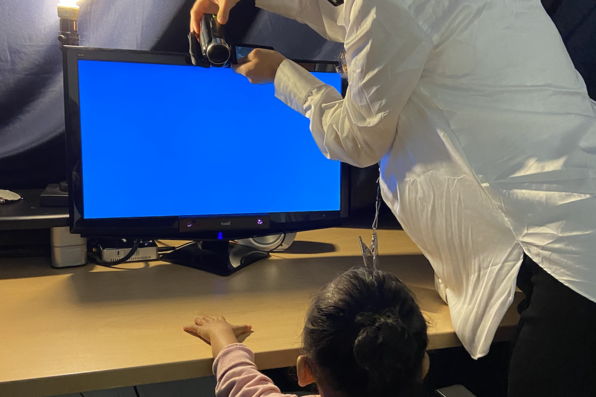Toddler Study
Main content start
How long will the study last?
This is a longitudinal study that begins when your child is about 12 months of age and lasts until he/she reaches about 18-24 months of age. The study involves return visits to Stanford when your child is age 12 months and about 18 months.
It will consist of three assessments: when your child enrolls at approximately 12 months of age, when your child is 15 months, and 18-24 months of age
What procedures are we using to measure your child’s language development?
- Family Questionnaires: We will ask you to complete questionnaires about you and your family’s health, education and occupation, and language backgrounds.
- Medical Record Review: We will review your child’s medical records, including medical conditions, treatments, previous neuroimaging (ultrasound, CT scans), family visitation, use of Kangaroo care, breastfeeding, and related information. The reason for the medical record review is to determine if illness, medical treatments, and social interactions contribute to the child’s language development.
- MRI analysis and Procedures: MRI machines use a magnet fields and radiofrequency pulses to make images of the body or brain interior. This method is different from and safer than x-rays. Your child cannot feel the magnetic fields. During the scan your child will simply lie on a long narrow couch while the machine gathers its information. We will try to obtain the MRI scans during the evening, when your baby is about to fall.
- Home Language Environment Assessment: We will ask your child to wear a special recording device, called a LENA®. The device fits into a pocket of specially designed t-shirts, vests, or overalls that we lend you. The child wears the device throughout a typical day at home, about 16 hours. The device picks up speech that is near and clear to the child so we can estimate how many words a child hears in that day. The device also records the child’s speech and the conversations between adults and child. We use special computerized automatic processing programs to analyze the data.
- Play Assessment: For this task, we will make a videotape of your child interacting with you or another caregiver while playing with a set of toys we provide as you might at home. We use this to determine how you and your child interact and the level of your child’s language skills.
- Looking while Listening. This task assesses how quickly and efficiently your child can look to a picture of a word he or she hears in recorded speech. Your child sits on your lap looking while you wear dark glasses so you cannot see what your child is looking at. An eye tracking machine assess what your child is looking at and how quickly he or she moves her eyes to and from that target. We analyze the child’s eye movements later in the laboratory.



